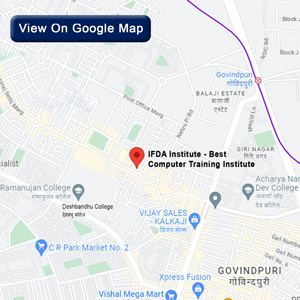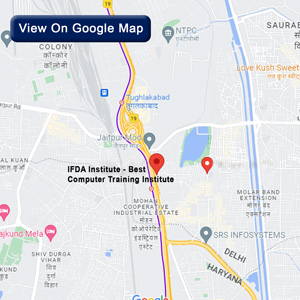Network Topology

Network topology may therefore be defined as the connection or manner in which a particular element in a network is placed as against other elements, such as linkages in a computer system. It outlines how those components that make up the network, which include switches, routers, and other devices, are connected or how data gets around the network. Knowledge of the topology is very essential since it influences the functionality, size, and robustness of the network.
What is Network Topology?
Topology is, in fact, the real or virtual structure of a network, indicating how two or more devices are connected within it. The nodes can actually include various types of devices, such as computers and servers, involved when defining the network topology. The physical topology is the actual physical arrangement of the cables and the other networking devices, while the logical topology addresses the nature of the data flow in the network irrespective of its physical design.
Another decision that has to be made during the network design process is the kind of topology to be used in the network since it affects the installation, management, and overall performance of the network.
Types of Network Topologies
There exist several typical network topologies, which are described by certain peculiarities, advantages, and disadvantages. The most widely used topologies include:The most widely used topologies include:
1. Bus Topology
Connected in a BUS topology, all the devices in the network have to connect on a single cable, known as the BUS. Information transmitted from any device is ferried on this bus till it gets to its intended location.
Advantages:
Simple and cost-effective: It is simple to install, and fewer cables are needed when compared to
other topologies, thus making it cheap for small networks.
Easy to Extend:: More devices can be accommodated to the network in the easiest way possible
by simply connecting them in the bus.
Disadvantages:
Limited Scalability: Adding more devices leads to deterioration of the performance of the
network because of data collisions on the bus.
Single Point of Failure: Total cable failure on the central cable means that the entire network will
be very much affected.
Applications: : As mentioned above, bus topology is used in small and simple networks or in
those networks where the network is temporary and requires instant setup.
2. Star Topology
All the devices are connected to a central hub or switch in the star topology. This type of topology is also called a central-bus topology or active topology. The hub is also equivalent to a repeater to work on the flow of data.
Advantages:
High Performance: Since data go through the central hub, there are fewer data collisions,
resulting in improved performance of the network.
Easy to Manage:: There is ease in troubleshooting because every device is connected
independently to the hub. In the case of one device malfunctioning, it does not affect the rest of
the network. This is because.
Disadvantages:
Central Point of Failure: It means that when the most important center collapses, the whole
connection becomes unusable.
Higher Cost: There is more cabling to be installed than the bus topology, making the total cost to
be high.
Applications: Star topology is widely used in home networks, small offices, and large
organizations where it is important that the network remain stable
3. Ring Topology
In a ring topology, every device is connected to another device, and the connection between the two devices is in a circular manner with the creation of the network path. One-way data flow is employed, and every device is connected to only two other devices.
Advantages:
Reduced Data Collisions: They are simplex in nature, with data transmission occurring in one
direction only, and this minimizes the chances of data collision.
Consistent Performance: One of the additional advantages of the topicality of a network is that it
does not decrease its performance with the growth of devices.
Disadvantages:
Difficult to Troubleshoot: Diagnosis and characterization of faults is not easy since a failure in
any of the devices or links will affect the whole network.
Single Point of Failure: In such a system, if any one device fails, it is likely to penetrate into the
other devices and put the entire network out of operation.
Applications: A ring topology is used where data traffic has to follow a definite and specific
pattern, such as in some metropolitan area networks (MANs).
4. Mesh Topology
A mesh topology is defined as a network in which every node or point is linked with all other nodes or points. This creates multiple routes for data transmission within the system, making it characteristic of high availability and redundancy.
Advantages:
High reliability: When one link is down, data can easily find another link through which to pass;
hence, the network is very reliable.
Optimal Performance: Since every device in mesh topology is connected solely to other related
devices, it derives good performances.
Disadvantages:
Complex and Expensive: This topology may involve a large number of connections, which can
make the topology costly and difficult to implement as well as maintain.
Difficult to Manage: The connections may become extremely complex when dealing with a large
mesh network, especially when managing the networks.
Applications: It is very common to see mesh topology used in systems where reliability and
performance are very important, like military or emergency communication systems.
6. Hybrid Topology
Hybrid topologies refer to a situation where one uses more than one of the mentioned topologies in a network. It also benefits from the topologies while discounting the trivial defects that belonged to any structure.
Advantages:
Flexible and Scalable: Hybrid topology also enables implementation of the network that can suit
all the needs of a specific project to be met.
High Reliability: Multiple topologies can be connected in order to make the hybrid networks
more reliable as well as efficient.
Disadvantages:
Complexity: The topology of the network can also be multiple, making the overall structure of
the network more complicated to manage.
Cost: The implementation of hybrid topology may be additionally costly as compared to a single
type of infrastructure.
Applications: Hybrid topology is common in large network environments where the need may
arise for the various sections of a company to have different topologies.
Choosing the Right Topology
The kind of network topology to be used depends on aspects such as the scale of the network, its performance characteristics, cost, and nature of the organization. Here are some key considerations:Here are some key considerations:
Network Size: As shown above, for small networks, one may be able to use bigger and simpler
topologies such as bus or star. In large networks, it may be compulsory to use more
sophisticated topologies, such as mesh or hybrid topologies.
Performance Requirements: Some of the networks, like those that are heavily dependent on
high performance and low latency, like the ones used in stock exchange or gaming, may benefit
from the mesh or hybrid networks.
Budget: Cost is always an issue. Bus topology is usually the easiest to implement in the sense
that it requires the least cabling and hardware and is therefore almost always less expensive
than other topology types, such as mesh and hybrid topologies.
Scalability: If, for instance, the networks are projected to expand, then it is recommended that
the topology that supports expansion, such as tree or hybrid topologies, be adopted.
Conclusion
Network topology can be considered a core concept of networks and is directly associated with networks’ efficiency, expandability, and durability. Whereas it is easy to comprehend the basic forms of connectivity when installing a small home network, that is where the complications of different types of network topographies and their usage altogether arise when designing a large enterprise system. Thus, selecting the right topology can provide one with a working network that would already meet necessary requirements today and would not turn into an insurmountable problem as one gains more users and equipment in the future.
- Written By - Natasha Singh









